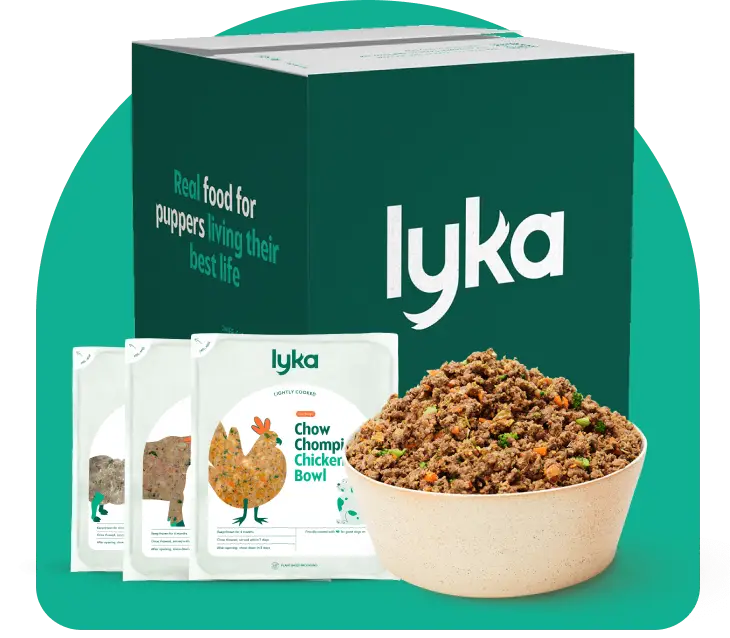Cavoodles — the adorable cross between a Cavalier King Charles Spaniel and a Poodle — are loved for their affectionate nature and low-shedding coats. But behind their charm are some common health sensitivities that make nutrition especially important. From skin sensitivities to joint conditions, what you feed your Cavoodle can have a major impact on their quality of life.
In this guide, we explore how to give your Cavoodle the best start and long-term health through nutrition. You’ll learn which ingredients to look for, how to manage common health concerns with diet, and how to choose food that suits your pup’s specific needs.
Read more: Cavoodle breed insights: care, personality & expert tips
How nutrition can help common Cavoodle health concerns
Skin sensitivities and allergies
With their soft, often curly coats, Cavoodles can be prone to skin itchiness and flare-ups from food intolerances or allergies. Diets containing ingredients with anti-inflammatory properties and free from common allergens like chicken, beef, and wheat can help manage skin issues and promote a healthier coat.
Try this:
Lyka’s Hypoallergenic Pro meal, using goat as a novel protein, is designed to soothe skin without triggering allergic responses.
Read more: Dog skin allergies: triggers, symptoms and itch relief treatment (with photos)
Joint conditions
Despite their small size, Cavoodles can be prone to joint problems. This may be due to patellar luxation (a hereditary condition where the kneecap slips out of place) or early signs of arthritis, which can affect their mobility and comfort. Maintaining a healthy weight and providing joint-supporting nutrients can be key to long-term mobility.
Try this:
Ingredients like turmeric, ginger and omega-3 fatty acids from fish oil can support joint health and mobility.
How to choose the best food for your Cavoodle
Fresh food, raw, wet or dry? Supermarket, pet shop, or delivered to your door? There are so many dog food options on the market — where do you begin?
1. Complete and balanced
Cavoodles, like all pups, need a complete and balanced diet containing the right nutrients in the right proportions.
Australia has pet food standards, but they’re largely unregulated. Many brands follow AAFCO (Association of American Feed Control Officials) or FEDIAF (European Pet Food Industry Federation) guidelines.
Meeting AAFCO and FEDIAF standards is just the start. Lyka meals are formulated by a team of Board-Certified Veterinary Nutritionists to ensure they’re complete and balanced for all life stages.
Read more: Dog food ingredients: a glossary of common and confusing terms
2. Optimal nutrition for your Cavoodle
Not all dog food is created equally. Variety and quality of ingredients and cooking methods can all impact the nutrient availability of your dog’s food.
Many raw dog food options present a good balance of high-quality protein, fresh produce, and superfoods. But not all dogs can easily digest raw food, especially pups with a weakened immune system, or digestive issues.
Dry food (kibble) often contains high amounts of carbohydrates and synthetic vitamins and minerals. The animal protein used in kibble is often pet-grade, like meat meal or meat by-products, that vary in quality and are not subject to the same checks as human-grade meat. Kibble is usually cooked at high temperatures which can reduce digestibility and can lead to the potential formation of harmful compounds, like acrylamides.
Home cooking can be a great option for your dog, but making sure each mouthful is complete and balanced is not easy to do without expert guidance.
Lyka meals are made using human-grade ingredients and are gently cooked then snap-frozen to retain their nutritional value and digestibility. Each meal is high in protein and custom-portioned to meet your dog’s daily needs.
Want to dig deeper into which type of food is best for your Cavoodle? We’ve created a series of guides to help you make an informed choice.
Read more: Freshly cooked vs kibble for dogs: which is better?
Read more: Freshly cooked vs raw meat for dogs: which is better?
Read more: Freshly cooked vs home cooking for your dog: which is better?
Read more: Freshly cooked vs wet food for dogs: which is better?
)
How much food does a Cavoodle need?
Serving size recommendations based solely on weight don’t tell the full story. Your dog’s energy level, lifestyle and body condition score are all part of the picture.
That’s why Lyka calculates your Cavoodle’s portion sizes based on their personal profile, not just on their weight.
Establish a consistent feeding routine with your Cavoodle to support their digestion, especially if they have a sensitive stomach.
Do Cavoodle puppies and senior dogs need special food?
Not necessarily. Nutrient-dense, real food meals formulated for all life stages — like Lyka — cover the daily requirements of both growing pups and dogs in their golden years.
Read more: Why real food is the healthiest choice for senior dogs
Read more: What should puppies eat? Expert nutrition tips for optimal development
)
New to Lyka? Let’s rethink dog food together
Parenting a Cavoodle comes with plenty of decisions. Choosing what’s in their bowl is one of the most important.
Designed by Board-Certified Veterinary Nutritionists and made with real, human-grade ingredients, Lyka meals are custom-portioned to match your dog’s needs.
Cavoodles across Australia are already thriving on Lyka — yours could be next.
Join our pack of proud Cavoodle parents today.
)
)
)

)
)
)
)
